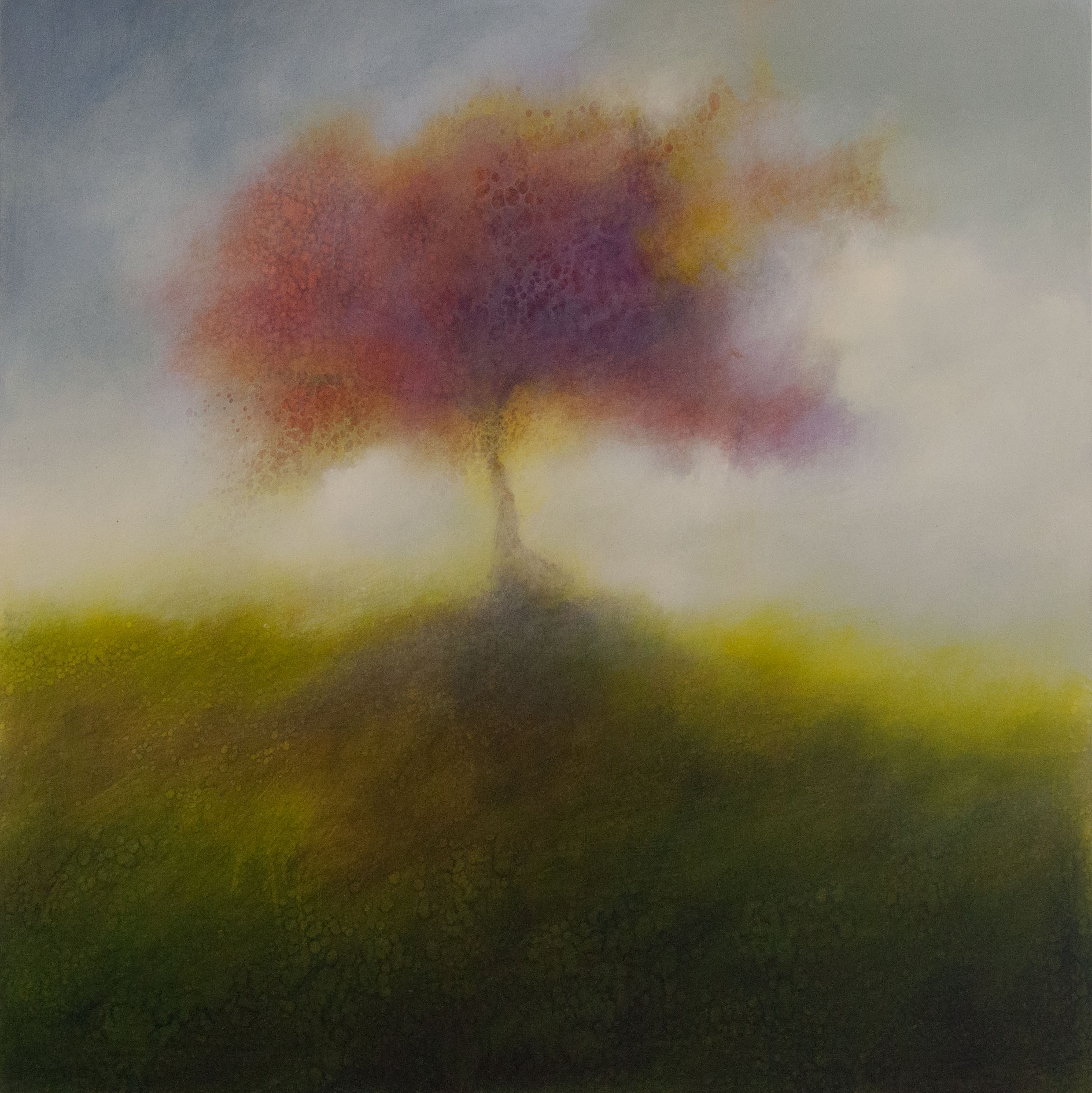Washington Post art critic Mark Jenkins reviews works by Judith Judy

Bright,Verdant: Judith Judy's radiant landscapes seem to be visual entrances into the world of light, as in "Tree Grows Alone"
The title of Judith Judy’s show at Alex Gallery, “Beyond the Real,” is intentionally ambiguous. The Northern Virginia painter is not an abstractionist, yet her warm, radiant landscapes aren’t modeled on particular places. Indeed, they seem designed as portals, visual entrances into the world of light. Soft-textured trees and grass define the foreground and vaporous sky the background, but the action transpires between the two, on the plane where sunlight bleeds into a rich, indistinct glow.
Judy paints in oils on board prepared with gesso, which provides a chalky white backdrop. For some of these pictures, she adds gold or copper leaf, amplifying the sheen. Rather than render distinct areas of shiny metal, as classical painters once did, she works the gold or copper into the multiple glazes of thin pigment, a technique that provides a loose, mottled luminosity.
Aside from the complementary metallic shades, yellow is often the key to Judy’s pictures, representing leaves, grass or diffused sun. She uses crimson less frequently but just as vividly. “Red Tree” shows a small blur of scarlet foliage at the center of a mostly verdant environment, while “Last Sunrise” is a tangle of green, highlighted by glimmers of ruddy twilight that seep through. Dark shades are not unknown in Judy’s work; there are shadows beneath the trees, and loamy soil along stream beds. But the browns and blacks, like the greens, are just there to make the hotter colors blaze more brightly.
